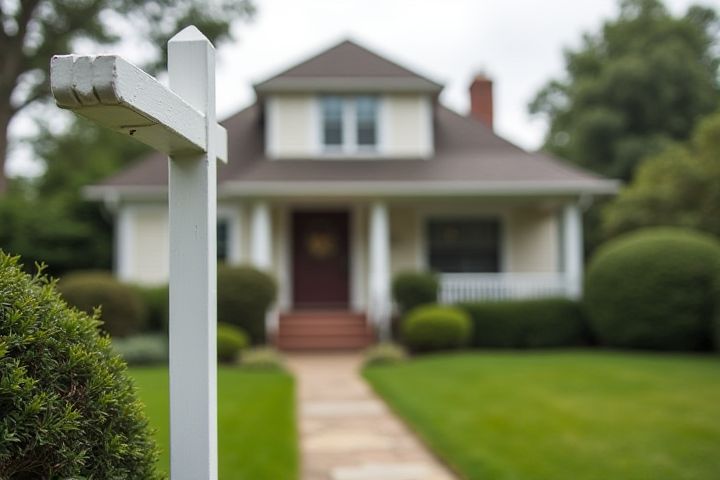
House location significantly influences property value due to various factors, including proximity to amenities, schools, and public transportation. For instance, homes situated near reputable schools can command higher prices because families prioritize quality education. Additionally, urban areas with vibrant economic activity often see increased demand for housing, driving up values. Safety and neighborhood reputation also play a crucial role; areas with lower crime rates typically attract more buyers, enhancing property desirability. Ultimately, a prime location not only contributes to current market value but also influences future investment potential.
Why House Location Affects Value
School district quality
The quality of the school district significantly influences a property's value, as many homebuyers prioritize access to high-performing educational institutions. Homes situated within prestigious school districts typically command higher prices due to the desirability of the neighborhood and the perceived benefits of excellent education for children. In addition, strong school ratings can enhance resale value, making these properties attractive to investors looking for long-term returns. Living in a reputable school district can also foster community engagement and stability, further boosting local property values.
Proximity to public transportation
Proximity to public transportation significantly influences a house's value by enhancing accessibility and convenience. Homes located near bus stops, train stations, or subways offer easier commutes to work, school, and recreational activities, making them attractive to potential buyers. This accessibility often leads to higher demand, especially in urban areas where residents prioritize efficient travel options. Consequently, properties close to reliable public transit can command a premium, reflecting their desirability in today's fast-paced lifestyle.
Local crime rates
Local crime rates significantly influence house values, as potential buyers often prioritize safety when choosing a neighborhood. Properties situated in areas with high crime rates typically see decreased demand, which in turn lowers market prices. Conversely, homes in low-crime neighborhoods usually command higher prices due to increased desirability, appealing to families and individuals seeking a secure living environment. Understanding the local crime statistics can help you make informed real estate decisions and maximize your investment's potential.
Nearby amenities and services
The location of a house significantly impacts its value, as proximity to nearby amenities and services greatly enhances its desirability. Homes situated close to essential facilities such as grocery stores, schools, and healthcare services offer convenience, which is highly sought after by buyers. Access to recreational areas, parks, and dining options also creates a vibrant community atmosphere, further boosting property appeal. You will find that neighborhoods with well-developed infrastructures, like public transport and recreational venues, often command higher market prices, reflecting the convenience and lifestyle they provide.
Neighborhood development trends
Neighborhood development trends significantly influence house value by shaping the overall desirability of an area. Growing amenities, such as parks, shopping centers, and dining options, enhance the appeal, attracting families and professionals. Moreover, urban revitalization projects often lead to increased property values as infrastructure improves and public services are upgraded. Understanding the dynamics of neighborhood growth can help you make informed decisions about potential property investments.
Access to employment centers
House location significantly impacts value, particularly due to proximity to employment centers. Homes situated near major workplaces often attract higher demand, as residents prioritize convenience and reduced commute times. This increased desirability can lead to appreciation in property values, with potential buyers willing to pay a premium for easy access to job opportunities. Living closer to these centers also enhances your quality of life, as you spend less time commuting and more time enjoying local amenities.
Environmental factors and natural hazards
The location of a house significantly influences its value due to environmental factors and natural hazards. Proximity to essential amenities such as parks, schools, and shopping centers enhances desirability, while neighborhoods with green spaces often command higher prices. Conversely, areas prone to natural hazards, such as flooding, earthquakes, or wildfires, typically experience reduced property values, as potential buyers are wary of risks associated with these threats. Understanding these environmental considerations can help you make informed decisions when assessing real estate investments.
Local zoning laws and regulations
Local zoning laws and regulations play a pivotal role in determining a house's value by establishing land use, density restrictions, and building codes within specific areas. For instance, residential zones may limit commercial activities, thereby maintaining a community's residential character and potentially enhancing property values. Conversely, areas with lenient zoning laws could lead to overcrowding or undesirable developments, adversely affecting home prices. Understanding the local zoning landscape is essential for buyers, as it directly influences future developments and surrounding property conditions that could impact your investment.
Community reputation and desirability
The location of a house significantly impacts its value due to the community's reputation and desirability. Areas known for excellent schools, low crime rates, and vibrant amenities often command higher property prices, as potential buyers prioritize these factors. A desirable community fosters a sense of belonging and enhances overall living experiences, making homes in these neighborhoods more sought-after. Consequently, your property's worth can increase or decrease based on the perceived status and appeal of the surrounding area.
Historical property value trends in the area
The location of a house significantly impacts its value due to historical property value trends shaped by neighborhood development, local amenities, and socio-economic factors. Areas with rich historical significance or well-preserved architecture often attract higher property values as buyers seek to invest in legacy and culture. Access to quality schools, parks, and public transport can enhance desirability, driving up market demand and setting a precedent for increased property value over time. Analyzing past trends in your desired neighborhood can provide valuable insight into potential future appreciation and investment stability.
